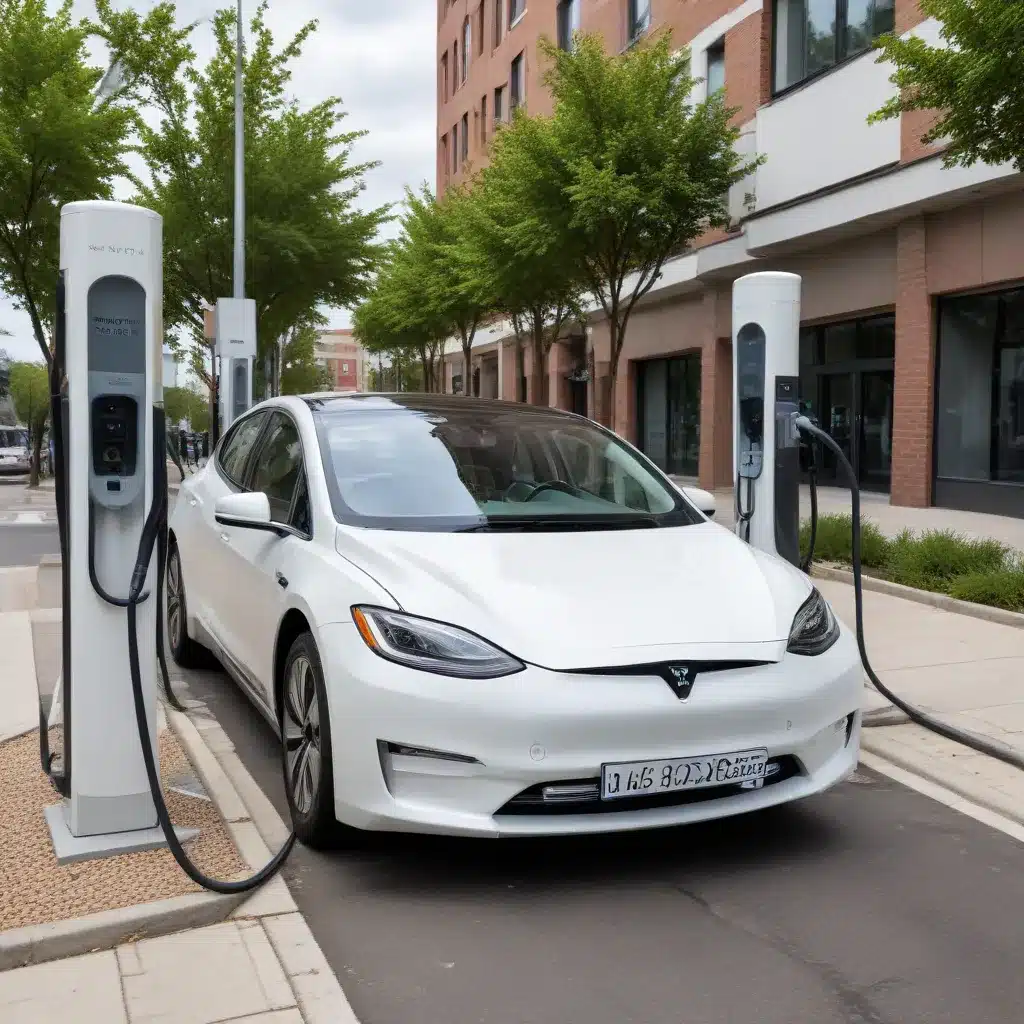
The Expanding Landscape of EV Charging
As the world shifts towards a more sustainable future, the adoption of electric vehicles (EVs) has been steadily on the rise. With governments and automakers alike investing heavily in the development and promotion of EVs, the need for a robust and efficient charging infrastructure has become increasingly crucial. This article delves into the latest data and insights on the state of electric vehicle charging infrastructures, providing IT professionals and technology enthusiasts with a comprehensive understanding of this rapidly evolving landscape.
Understanding the EV Charging Landscape
The growth of the EV market has been driven by several factors, including advancements in battery technology, government incentives, and growing consumer awareness of the environmental and economic benefits of electric transportation. According to the International Energy Agency (IEA), the global EV stock reached over 16 million units in 2022, a remarkable increase from just over 17,000 units in 2010.
To support this surge in EV adoption, governments and industry players have been investing heavily in the development of charging infrastructure. In the United States, the Joint Office of Energy and Transportation has been working to provide stakeholders with critical data and tools to facilitate the deployment of EV charging stations. These resources include the Electric Vehicle Charging Analytics and Reporting Tool (EV-ChART), which will serve as a centralized hub for collecting the data required by the Federal Highway Administration.
Charging Infrastructure Projections and Targets
In California, the state has set ambitious goals for the expansion of EV charging infrastructure. The Assembly Bill 2127 Second Electric Vehicle Charging Infrastructure Assessment projects that by 2030, California will need 1.01 million public and shared private chargers to support 7.1 million passenger plug-in electric vehicles. This represents a significant increase from the current installed base of over 91,000 public and shared chargers, including nearly 10,000 direct current fast chargers.
To meet these targets, the California Energy Commission (CEC) has been coordinating with various stakeholders, including utilities, public agencies, and private entities, to identify and address the charging needs across the state. The CEC’s efforts will leverage past work, such as the 2018 report “California Plug-In Electric Vehicle Infrastructure Projections 2017-2025,” as well as ongoing activities in the 2019 and 2020 Integrated Energy Policy Reports (IEPR).
Challenges and Opportunities in EV Charging Infrastructure
While the growth in EV charging infrastructure has been impressive, several challenges remain to be addressed. One of the key challenges is the need for widespread investment in the grid and effective management of the electrical grid to reduce potential impacts from the increased demand for charging. Improving charger and vehicle technology, alongside grid upgrades, will be crucial to accommodate charging in a way that minimizes the grid impact.
Another challenge is the need for a skilled workforce to support the installation and maintenance of the growing charging network. The Assembly Bill 2127 assessment estimates that up to 71,500 job-years will be needed for charger installation by 2035, underscoring the importance of labor and workforce training and development.
However, these challenges also present significant opportunities for IT professionals and technology experts. As the EV charging infrastructure expands, there will be a growing demand for data-driven solutions, cybersecurity measures, and innovative software and hardware systems to manage and optimize the charging network. IT professionals can play a crucial role in developing and implementing these solutions, contributing to the success of the transition to a more sustainable transportation system.
The Role of IT Professionals in EV Charging Infrastructure
IT professionals can leverage their expertise to contribute to the development and deployment of EV charging infrastructures in several ways:
-
Data Analytics and Visualization: With the increasing availability of data through tools like EV-ChART, IT professionals can develop advanced analytics and visualization solutions to help stakeholders understand charging patterns, identify bottlenecks, and optimize the allocation of charging resources.
-
Cybersecurity and Risk Management: As EV charging systems become more interconnected, IT professionals can provide expertise in developing robust cybersecurity measures to protect the charging network from potential threats and ensure the privacy and security of user data.
-
Software and Hardware Integration: IT professionals can play a crucial role in designing and implementing software and hardware systems that seamlessly integrate with the EV charging infrastructure, improving user experience, remote management, and maintenance.
-
Grid Integration and Energy Management: Collaborating with energy and utility providers, IT professionals can develop solutions that optimize the integration of EV charging with the electrical grid, minimizing the impact on the grid and enabling the use of renewable energy sources.
-
Workforce Training and Development: IT professionals can contribute to the training and development of the workforce needed to install, operate, and maintain the growing EV charging infrastructure, ensuring the availability of skilled technicians to support the transition to electric transportation.
Conclusion
The expansion of electric vehicle charging infrastructures is a crucial component of the transition to a sustainable, low-emission transportation future. As the EV market continues to grow, the demand for robust and efficient charging solutions will only increase. IT professionals, with their expertise in data analysis, cybersecurity, software development, and system integration, can play a pivotal role in shaping the future of EV charging infrastructures and driving the adoption of electric vehicles.
By leveraging the insights and data presented in this article, IT professionals can stay ahead of the curve, positioning themselves as valuable partners in the development and deployment of the next generation of EV charging solutions. The IT Fix blog is committed to providing ongoing coverage and analysis of the latest trends and innovations in the EV charging infrastructure landscape, empowering IT professionals to contribute to a more sustainable and technologically advanced transportation system.












